Statewide fishing ban tied to the governor’s “Stay Home, Stay Healthy” order could be lifted by early May and allow for some sport fisheries to reopen before long Leave a reply
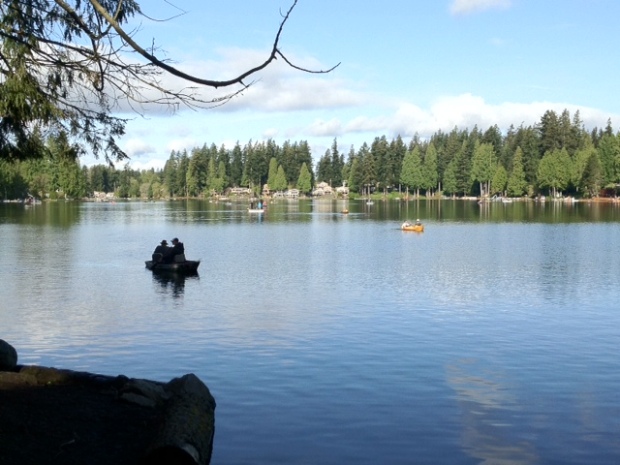
When life was normal thousands of anglers would be making plans to hit hundreds of lakes this weekend for one of the biggest fishing events of the spring, better known as “opening day” of the statewide trout season.
However, due to the COVID-19 “Stay Home, Stay Healthy” order all fishing is closed until May 4 although the Washington Department of Fish and Wildlife (WDFW) staff are now weighing preliminary plans to open some fisheries.
“We’d like to get the message out as soon as we possibly can but turning off the light switch is a lot easier than turning it back on,” said Larry Phillips, the WDFW Region 6 Director. “We want to let people know that we’re working hard behind the scenes on how we can structure an opening of fisheries.”
WDFW has target dates in mind on when to open certain fisheries and are staying in close contact with health experts and county and community leaders to grasp a better understanding of how this will all play out once restrictions are relaxed. Some have suggested it will start off with fisheries that are passive rather than the ones needing coverage under the Endangered Species Act or are reliant on intensive monitoring and sampling.
Governor Jay Inslee alluded to the possibility a resumption of some outdoor recreational activities during a televised address this past Tuesday (April 21). WDFW officials hope to hear back very soon from the governor’s office on when to proceed with a plan, which could be as soon as early next week when the governor is expected to provide another update.
Once WDFW is given the go ahead it is likely there will not be an official makeup of “opening day” and appears that lakes would simply just open sometime after the fishing ban is lifted, but how this will actually play out is still up in the air.
One of the biggest challenges WDFW staff are faced with is how “social distancing” will come into play and managed at each of the lakes.
“We are still planting as many trout as best as we can during these unusual circumstances, and plan on having all of our trout planted before fishing re-opens,” said Steve Caromile, WDFW inland fish program manager, who points out that it takes normally about three to four weeks to get the fish out into all the pre-determined lakes.
The hatchery facilities in southern Puget Sound (Region 6) can hold back on getting trout planted into lakes through May although there are challenges in the Puget Sound area (Region 4) where they can’t be held as long due to the fact that other fish like steelhead are raised in the ponds.
WDFW indicates they will be stocking or have stocked more than 16.5 million trout and kokanee into 546 water bodies across the state.
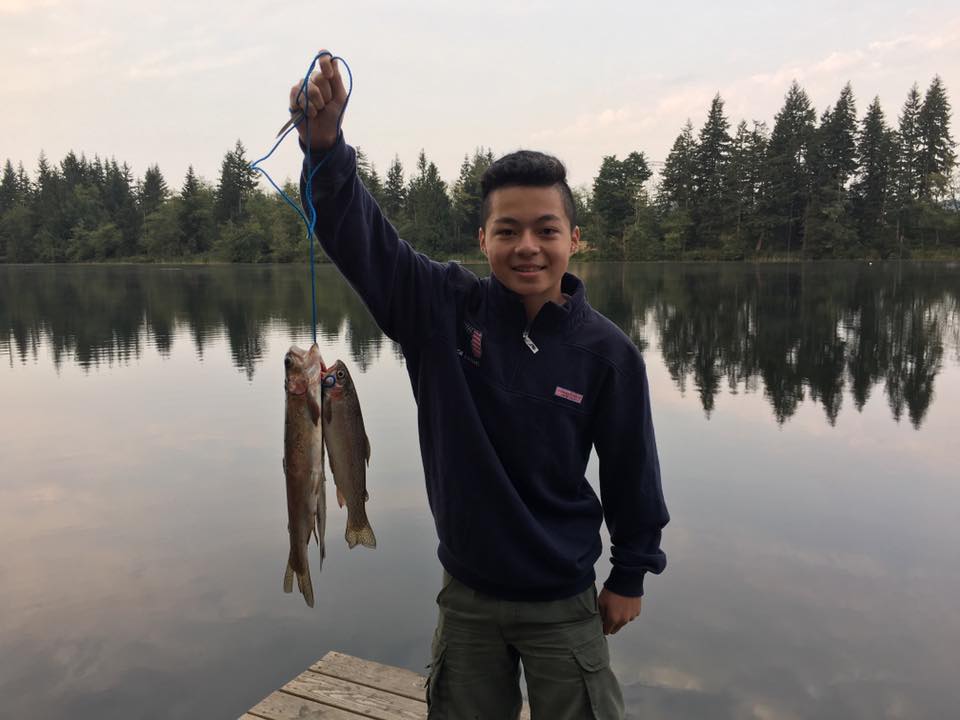
Some years ago, WDFW devised a cost-effective way to produce larger catchable-sized trout – 11 inches compared to 8 inches – in hatcheries, which has been well-received by anglers surveyed on previous openers.
Once the closure is lifted anglers should find about 2.19 million catchable trout in lakes and ponds. For a list of lakes expected to be planted, go to https://wdfw.wa.gov/fishing/reports/stocking/trout-plants.
WDFW is also stocking 146,559 jumbo trout averaging more than 14 inches in length and one pound or larger in weight. Adding to that is more than 14 million fry, fingerlings, and put and grow trout that went into lakes during spring and fall of 2019.
WDFW plans to hold the popular WDFW Statewide Trout Fishing Derby (normally gets underway from April 25 through Oct. 31) that features more than 100 lakes planted with around 1,200 tagged trout. There are over 1,000 prizes donated from more than 100 participating businesses totaling over $40,000.
“We are currently moving forward with the derby and in the process of assigning prizes to lakes, though due to the COVID-19 Stay Home-Stay Healthy order, we will need to delay the start of the derby,” Caromile said. “Last year we had roughly half the tags returned statewide which is a pretty good percentage.”
WDFW has created a new online system for anglers who catch tagged trout to report them. Depending on the prize they will either be mailed or picked up at WDFW regional offices by the recipient.
Anglers will also be able to share their derby success on social media with the hash tag of #watroutderby. For details, go to https://wdfw.wa.gov/fishing/contests/trout-derby.
Fishery managers weighing halibut fishing options
Others in the WDFW agency have also been hard at work with detailing out how fisheries might possibly look once the fishing ban is lifted.
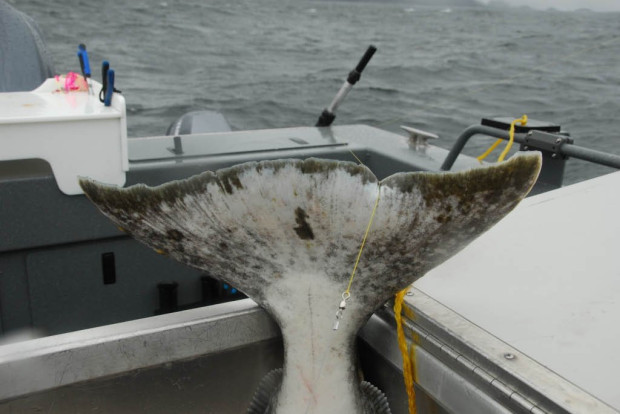
The halibut fishery was supposed to open April 16 and is often regarded as one of the first and most popular spring time fishing opportunities.
“Nothing is carved in stone and we are not making decisions and looking toward our director as to when we could open any halibut fisheries,” said Heather Hall, the WDFW halibut resource and intergovernmental ocean policy manager.
“We recognize there is a lot of uncertainty when it comes to recreational fishing reopening in itself,” Hall said. “We are working on ways to provide opportunities in a way that doesn’t deviate far from the governor’s approach to the “Stay Home, Stay Healthy (order).”
To reimplement the halibut fisheries is even more complicated as currently Neah Bay and La Push are not allowing the general public into their communities.
“I’ve talked to folks at the Makah Tribe and as you can imagine it is a scary idea to have this virus be introduced to their small communities and the results could be devastating,” Hall said. “Even if we reopened fishing I don’t think those areas will be open at the same time and will take a more conservative approach.”
Hall says their agency has conducted ad-hoc conference calls with sport and charter boat, and port and community representatives to get their feedback.
“We recognize that it would be really disruptive to open just Ilwaco, Westport and maybe Sekiu where you’d create a surge in effort,” Hall said. “That would also hurt the northern coastal communities. What I heard from the callers is they really wanted to open all the coastal areas at the same time in fairness. To do that were thinking of pushing the halibut season opening into August.”
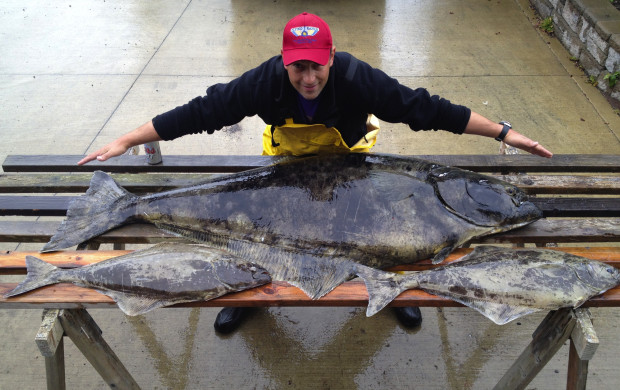
The other complication of an earlier summer opener is it would be hard on the WDFW sampling staff to manage a salmon and halibut fishery at the same time.
In contrast to the coast there is some interest to get the Puget Sound/Strait of Juan de Fuca halibut and lingcod fisheries open sooner although it would be dependent of the health agencies and city leaders from each of those communities and whether WDFW sampling could function properly under social distancing rules.
“If it is all workable then we could say let’s ‘go for it’ sometime in May,” Hall said. “But it does take some planning and even if everything aligned and the governor said we can get back to fishing after May 4 we would probably not give the approval to go halibut fishing right away. I think we would feel comfortable to open on May 14 (in the Puget Sound and Strait regions).”
While that possible reopening date of May 14 is a step forward, anglers should remember that until approval is given then any plans of going fishing should be tabled.
Spot shrimp fishery outline also comes to light
Many have been clamoring on when the popular spot shrimp fishery will begin along inner-marine waterways. The original start dates depending on the marine area was supposed to be May 3 or May 16.
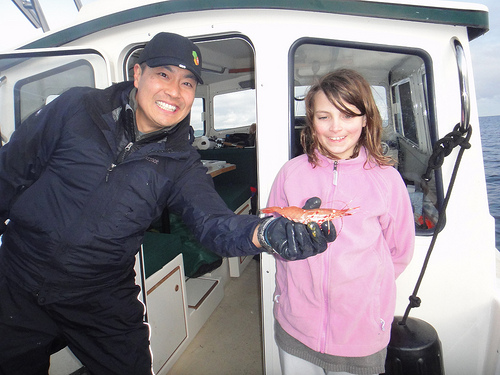
“We’ve been running through a planning exercise in order to figure out what fisheries pertaining to (spot shrimp) would look like and at this point things might kick off on May 16,” said Aaron Dufault, a WDFW Puget Sound shellfish manager. “Initially we had plans for a staggered opening in certain areas by two weeks. Now we need to figure out what our plans will be due to the later start. That could mean we just open all areas on the same date or stagger out the dates by area.”
Spot shrimp are the largest – averaging 8 to 12 inches long – of more than 80 shrimp species in local marine waterways, but only seven are commonly caught by anglers. Most are lurking at depths of 30 to 300 feet.
The total spot shrimp sport harvest in 2019 was 208,223 pounds (194,863 in 2018) and the non-tribal commercial take was 94,651 pounds (97,578 in 2018) for a total of 302,874 pounds (292,441 in 2018).
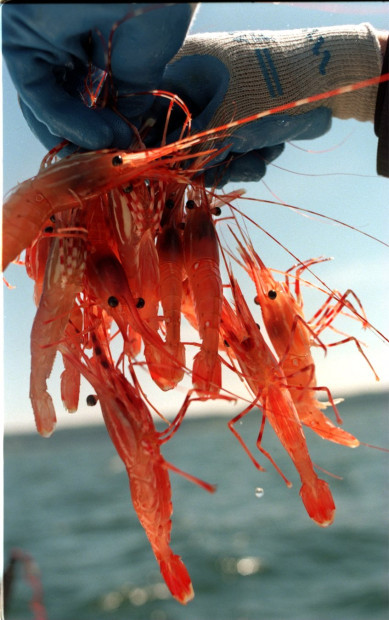
“In a general sense spot shrimp sport catches were good, and we did an OK job of staying within our management objectives,” Dufault said.
Sport and non-tribal commercial fishermen split a 300,000-pound spot shrimp yearly catch quota with 70 percent going to the sport fishery. The tribal fishery has a 300,000-pound catch quota. Last year, 613,300 pounds was caught by all user groups.
Hood Canal is the only area where the spot shrimp fisheries will get an additional 5,000 pounds in the catch quota. All other quotas remain status quo to past seasons.
A breakdown of sport catches from 2019 showed Areas 8-1 and 8-2 had a harvest of 27,954 pounds (17,970 in 2018); Area 9, 6,844 (5,448); Area 10, 5,157 (3,571); Elliott Bay, 5,451 (4,401); Area 7 West, 248 (1,140); Area 7 East, 14,484 (14,407); Area 6 Central (Hein and Eastern banks and Smith Island), 7,487 (12,710); Area 6 South (northeast of Port Angeles), 2,000 (2,000); Area 6 outside of District 1 (north of Protection Island), 8,200 (4,325); Discovery Bay, 1,944 (2,441); Area 11, 2,549 (1,841); and Area 13, no catch (318).
Coastal razor clam season makeup unlikely
Hopes are fading fast for a reopening of coastal beaches to razor clam digging.
“There was a good low tidal series in the early part of May but with counties barricading all the approaches to beaches and needing to follow the safety guidelines of the (Stay Home, Stay Healthy) orders, I don’t feel we’ve got a chance to finish out the season,” said Dan Ayres, the head WDFW coastal shellfish manager. “For the moment it would be foolish to unleash 30,000 diggers on the roads and through towns leading to the coast.”
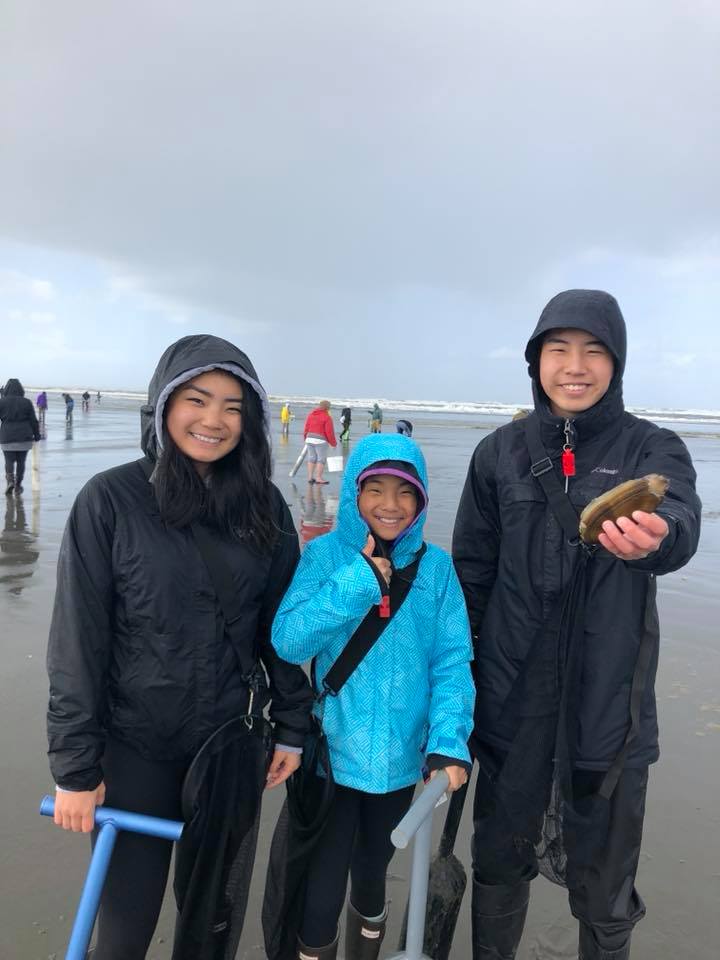
The majority of coastal beaches still have a stupendous razor clam population.
Through the March 6-11 digs, 253,927 recreational diggers have harvested 3,420,017 clams. Ayres noted their projections through the middle of May would have shown a total season turnout of 570,000 diggers with a harvest of around 8-million clams.
Prior to the closure, diggers had a total of 66 days of digging at Long Beach with a 13.9 clams per digger trip – a daily limit is the first 15 clams dug regardless of size or condition; 63 at Twin Harbors with 12.8; 31 at Copalis with 13.6; and 32 at Mocrocks with 13.0.
In all there was 58 digging days coast-wide in 2018-2019 with 273,000 digger trips producing a harvest of 3.7 million razor clams. Success on all beaches showed an average of 13.6 clams per digger trip.
“There is significant economic loss and loss of opportunity we’ll see but we need everyone to keep in mind the safety of everyone is the most important issue right now,” Ayres said.
Razor clam digging is a huge money maker for small coastal communities who rely on these opportunities during the lean tourist times in fall, winter, and spring to help boost their economy. The average value of the clam harvest to communities is estimated at around $25 million although in strong years it climbed to above $35 million in 2012-2013, 2013-2014 and 2014-2015 seasons.
Many are asking what the future holds for the 2020-2021 season?
“It is a living population and they live and die on their own schedule,” Ayres said.
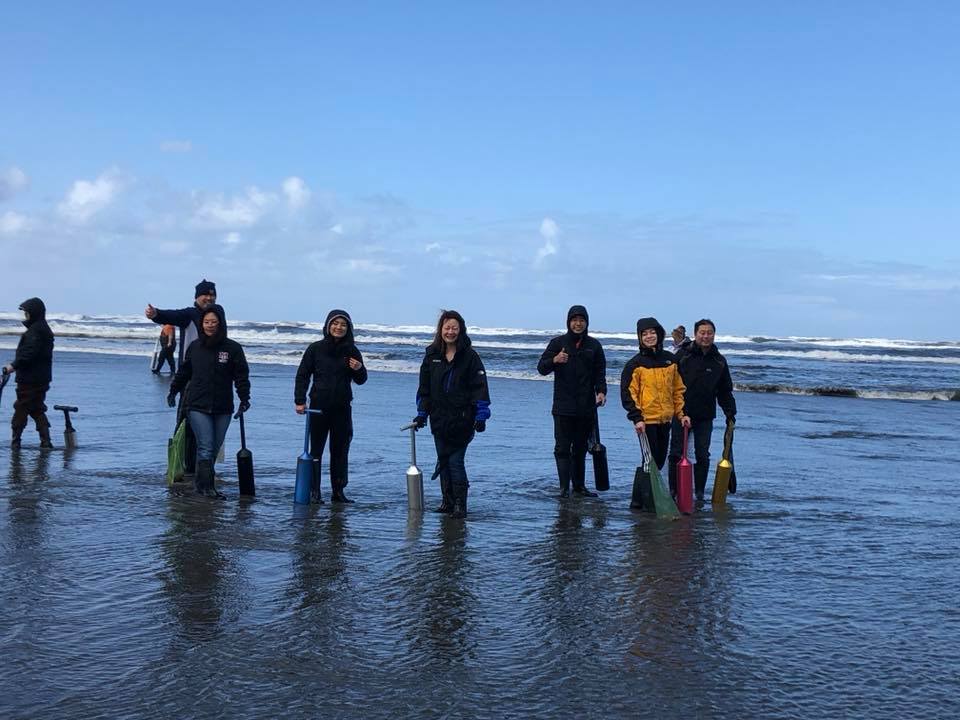
During the 2002-2003 there was a huge population of clams and the entire season was shut down due to domoic acid.
“We didn’t dig a single clam (in 2002-2003) and yet 50 percent of those harvestable clams were gone (the following year),” Ayres said. “There is no guarantee if they’ll still be there next fall but I sure hope they are.”
Depending on when the COVID-19 situation allows, WDFW will conduct summer razor clam assessments, and by late August they should have a good idea of the clam population.
Final approval on dates for the 2020-2021 fall, winter and spring season will be determined sometime in early September although in past years it usually gets underway by late September or early October.

